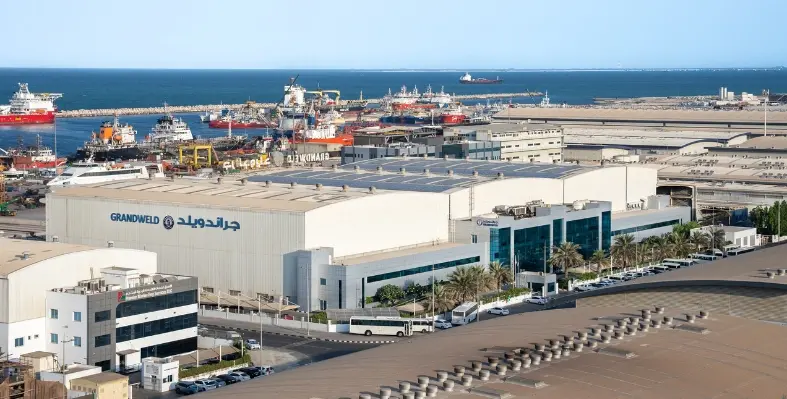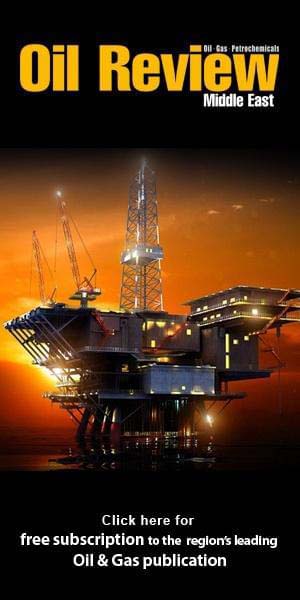Jamal S. Abki, general manager of Grandweld Shipyards, speaks to Technical Review Middle East on the company's latest updates. Read on:
Grandweld recently decided to generate a major portion of its energy through solar power. What drove this shift?
We believe that sustainability should not be treated as just a passing trend but a long-term strategic priority. Our decision to shift to solar power was driven by a deep commitment to align with the UAE’s forward-thinking environmental vision, particularly the Dubai Clean Energy 2050 and Dubai Net Zero Emissions Strategy 2050. Today, we generate 50% of our total energy needs through our solar power project, which has a current production capacity of 569 kWp, supporting both our ship building operations and our offices.
By becoming the first shipbuilder in the region to adopt solar power at this scale, we aim not only to reduce our carbon footprint but also to demonstrate that sustainable shipbuilding is both achievable and scalable. Our goal is to become a 100% green shipyard by the end of this year, with Phase Two of the project expected to conclude soon and set to increase total capacity to 1.3 MW.
The Grandweld shipyard's solar rooftop
What are some of the most transformative technologies currently being adopted at Grandweld?
The integration of advanced technologies has significantly enhanced the efficiency and precision of our operations. Having an in-house facility allows us to maintain full control over quality and timelines.
We have adopted high-precision tools like Computer Numerical Control (CNC) technology into our shipbuilding and repair processes, including a state-of-the-art 4-axis CNC lathe machines, which enables us to produce complex, high-precision components tailored to client specifications, whether for small-batch production or high-volume orders.
Additionally, the use of Optical Emission Spectrometers (OES) technology enhances quality control and operational efficiency, especially in raw material or sample identification.
We further offer specialised 4-stroke engine services and refurbish marine alternators through precise rewinding techniques that extend their operational life. Moreover, our vessels, such as the recently delivered FNSA 7, are equipped with real-time remote monitoring systems and full digitalisation packages. These technologies support predictive maintenance and continuous performance tracking, helping reduce downtime and improve overall vessel reliability.
Jamal Abki, general manager of Grandweld Shipyards
Can you tell us more about your foray into military vessel construction and how you see this segment evolving in terms of scalability and innovation?
With the Middle East military vehicles market estimated at US$34.25bn in 2025 and expected to reach US$46.49bn by 2030, at a CAGR of 6.3%, our transition into the defence sector has been both timely and impactful. We have secured US$65.8mn across 15 shipbuilding projects within the GCC and successfully delivered 12 vessels, underscoring our position as a trusted partner for both commercial and defence clients.
Our initial military supplies, including a 45m Fast Attack Craft and a 17m Interceptor Vessel, met stringent defence standards and showcased our technical expertise, highlighted by the Interceptor’s surface drive propulsion system and the Fast Attack Craft’s precision performance.
A military vessel built by Grandweld
Building on this momentum, we made a strong statement at NAVDEX 2025 with the unveiling of two advanced naval security platforms. One was the FA-400 Offshore Patrol Vessel, co-developed with ADSB and EDGE for ISR, zone surveillance, and rapid-strike operations. The other one was a 21-meter high-speed, lightweight Patrol Vessel designed for coastal defence.
Defence clients are now increasingly demanding modular vessel designs that allow multi-mission reconfiguration, integrated sensor suites, and hybrid propulsion systems. Our future roadmap includes expanding our defence portfolio with vessels offering enhanced automation and mission flexibility, ensuring Grandweld remains at the forefront of naval innovation amidst an evolving geopolitical landscape.
How is Grandweld contributing to designing vessels that support regional trade and sustainability goals?
From aluminium-hull crew boats that offer low-emission, high-speed personnel transfers to offshore patrol vessels designed for secure navigation in high-traffic zones, every vessel is purpose-built to optimise performance and minimise environmental impact.
To further align with the UAE’s green economy vision, we are also investing in next-generation shipbuilding technologies that promote sustainability and efficiency. Our focus includes integrating energy-efficient propulsion systems, advanced automation, and modular designs that not only reduce waste but also increase vessel versatility. These innovations support both economic resilience and environmental stewardship, enabling our clients to meet rigorous operational demands while advancing sustainability goals.








